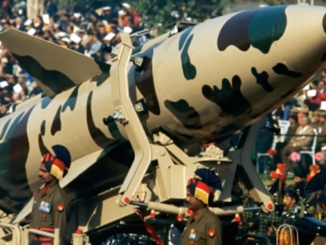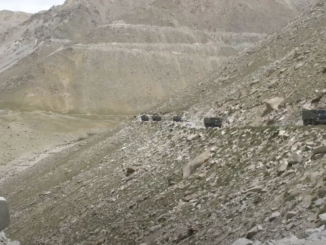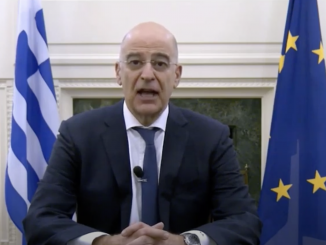 Indian Union Budget 2020-21 worth 2.9 Trillion US $ was announced on 1st February 2020. With the economy hitting a six-year low GDP growth, Union Finance Minister Nirmala Sitharaman presented a budget that focused on raising the purchasing power by cutting income tax rates and boosting rural income. This was the longest budget speech by any Indian finance minister, going beyond 2 hour 30 minutes.
Indian Union Budget 2020-21 worth 2.9 Trillion US $ was announced on 1st February 2020. With the economy hitting a six-year low GDP growth, Union Finance Minister Nirmala Sitharaman presented a budget that focused on raising the purchasing power by cutting income tax rates and boosting rural income. This was the longest budget speech by any Indian finance minister, going beyond 2 hour 30 minutes.
India, currently the 5th largest economy in the world in terms of GDP in Trillions of US Dollars, behind USA (21.4), China (14.1), Japan (5.2) and Germany (3.9), evokes interest even in international circles. To security analysts around the globe, India’s defence budget merits special attention.
Despite India’s aspirations of becoming a world power, the 2020-21 Defence Budget depicts a rise of only 5.8%, which is marginal. Indian army receives the largest piece of the pie while the majority goes towards paying pensions and salaries of personnel. Pensions, alone, have doubled over the last five years. It’s not only the magnitude of the allocation that is a cause of concern for Indian defence planners but the fact that it is a recurring future impact.
This leaves marginal amounts left over for the Ministry of Defence to upgrade its equipment. This is particularly harrowing for the Air Force and Navy, which are not only more tech-intensive than the Army but also where obsolescence sets in rapidly.
The bulk of 2020-21 defence expenditure will go towards acquiring the new Tejas Mk 1A aircraft. Although indigenously developed, the aircraft took over three decades to reach fruition and match the capabilities of the MiG-21 aircraft. Independent analysts find the Tejas well below par its major competitors, including neighbour Pakistan’s joint production with China, the JF-17 Thunder. Nonetheless, India plans to order 83 Tejas Mk1A jets, according to ICICI securities expectations.
Acquiring new equipment has been a point of contention for the defence sector because Indian Armed Forces currently prefer to import rather than acquire indigenous weapon systems. The technology produced in India is not considered up to the mark and superior versions are available off-the-shelf from foreign suppliers.
India’s military research branch—the Defence Research and Development Organization (DRDO)—also discourages private participation, claiming that they have superior expertise and should get priority in the strategic sector. This claim is not supported by ground realities like its major faux pas the Arjun tank, INSAS rifle, Saras, Kaveri, Akash, Nag and Indra Radar.
Despite its shortcomings, according to the World Bank, India is the fourth largest military spending power in the world.
Let us examine the financial outlay of India’s defense budget for 2020-2021 which will be $73.65 billion. Of the total budget, $18.52 billion is for weapons purchases; $32.7 billion is for maintenance of the military’s weapons inventory, pay and allowances, infrastructure, and recurring expenses; and $21.91 billion is for defense pensions. The capital budget leaves no room for any big-ticket weapons purchase, as over 90 percent of the allocation capital funds will be spent for past defense contracts’ committed liabilities.
In 2019, following its minor skirmish with Pakistan, Indian Air Force faced a setback after losing a MiG-21 and SU-30, prompting its Prime Minister to wish the fresh acquisition of Rafale fighter aircraft had taken place in time. The process of Rafale’s induction since then has begun.
India plans to make a number of purchases through the U.S. Foreign Military Sales program too, including 22 MQ-9 Reaper (Predator B) drones for $2.6 billion; and additional six P-8I maritime surveillance aircraft for $1 billion; two Gulfstream 550 aircraft for intelligence, surveillance, target acquisition and reconnaissance for nearly $1 billion; and one unit of the National Advanced Surface-to-Air Missile System II for more than $1 billion.
The Indian Air Force is to receive $6.76 billion from the 2020-2021 budget, a drop from the previous year’s $7.01 billion. The money is expected to go toward payments for orders of Rafale fighters from France and an S-400 missile system from Russia.
The Indian Navy has been allocated $4.56 billion, which is expected to help cover the cost of leasing a nuclear submarine and stealth frigates from Russia, as well as pay for warships from Indian companies. A Navy official said it is unlikely the service will be able to sign a contract for 24 MH-60R multirole helicopters for more than $2 billion from the U.S. next year.
The Indian Army is to receive $5.06 billion to cover previous orders of wheeled and ultralight artillery guns, T-90 tanks, and ammunition. India’s state-owned defense companies continue to receive 60 percent of defense-related business, with 30 percent going to overseas defense companies and 10 percent to domestic private defense firms.
The bare minimum increase in capital outlay will drastically affect several major acquisitions of the three services. The army is already procuring high-end artillery systems such as the M777 ultra-light howitzers, the K-9 Vajra self-propelled gun and the indigenously developed Dhanush for the frontiers with China and Pakistan. Payments for these are ongoing. The meagre allocation will also affect the navy, which had earlier approached the government for additional funds amid a severe financial crunch that is forcing it to rationalize and reduce its requirements. Due to the low budget, the navy has had to rework its plan of having 200 warships by 2027. The navy has been pushing to get its share of the defence budget back to the 18 percent it was 2012-13 from 13 percent for the current financial year. The navy has also had to cut down on the numbers planned to be acquired in some projects such as Mine Counter Measure Vessels and P8i maritime reconnaissance aircraft.
Indian Prime Minister Narendra Modi’s slogan of “Mazboot Bharat” (Mighty India) and his nation’s march towards a $5 trillion economy demanded an equally matching defence capability based on strategic autonomy but this has received a setback.
Indian war veterans believe that to be capable to counter future threats, it must address all three critical components; transformed politico-military culture based on greater mutual trust and understanding, transformed defence planning process focused on outcomes and transformed joint service capabilities through supportive budgetary reforms. The defence budget needs to be guided by certain economic realities and benchmarks. They opine that the defence budget must be pegged at 40 to 50% of the predicted growth rate implying that if the economic survey 2020 has predicted 6.5 % growth, defence budget must be pegged at least 2.5% to 3% of GDP.
It is interesting to note that the former Indian Army Chief, General Bipin Rawat, who has been elevated to the newly created post of Chief of Defence Staff, has dismissed any cause of concerns over the hike of merely six per cent defence budget and suggested that he would be looking at other options like increasing the retirement age and prioritizing defence procurements for better budget management. To keep the requirement of spending funds under control, General Bipin Rawat said the “purchase of equipment should be done in a phased manner keeping in mind the downtime of equipment due to the mandatory servicing or overhauling of equipment.”
Some retired Indian Army Generals opine that the calibrated modernization must relate to prioritized modernization, based on acquisitions adding maximum value to combat effectiveness, mitigating critical vulnerabilities and accepting certain risks in temporal terms. This would demand tri service-based filtration for the “best bang for the buck”. The key question, however, remains – ‘Is that elusive buck even insight’? They conclude that the Defence Budget 2020 is prominently indicative of its absence.
![]()




Be the first to comment